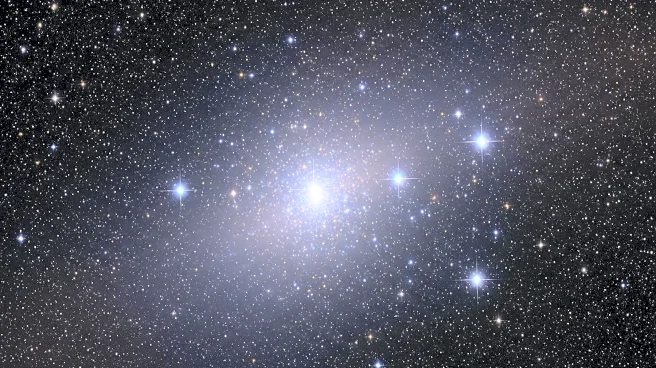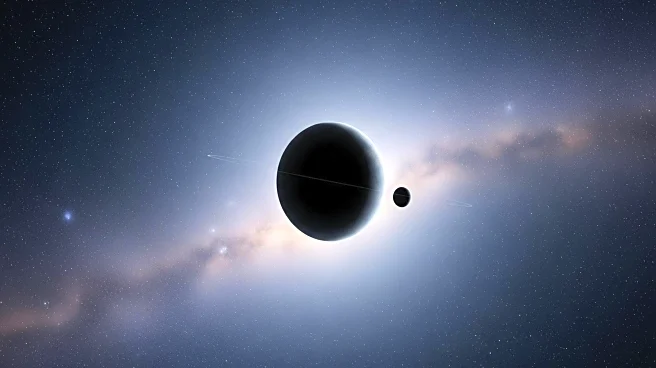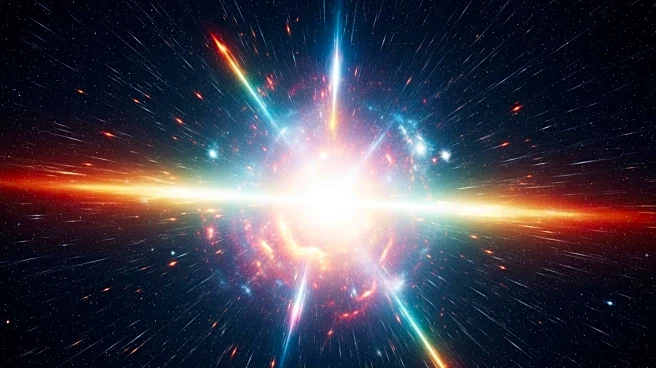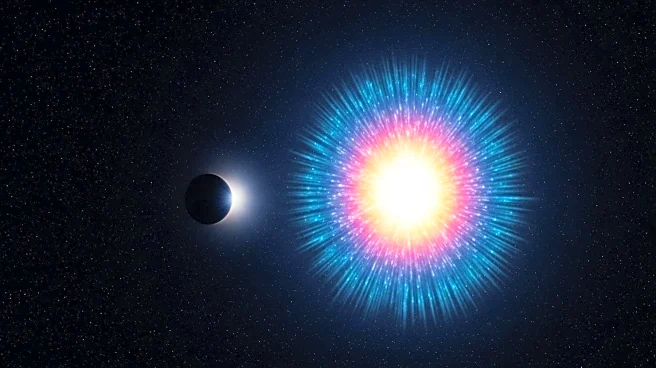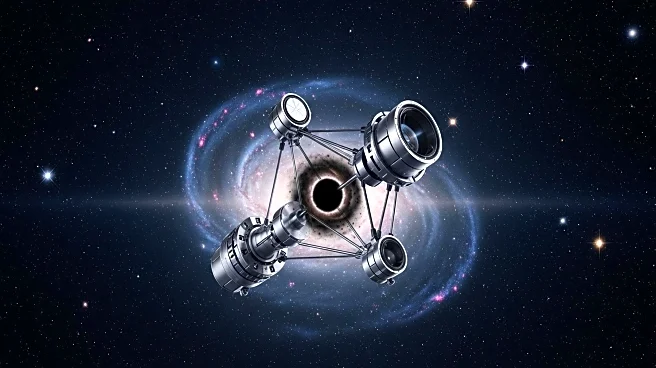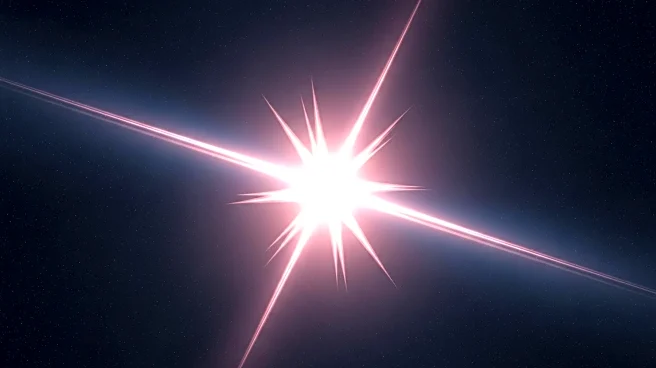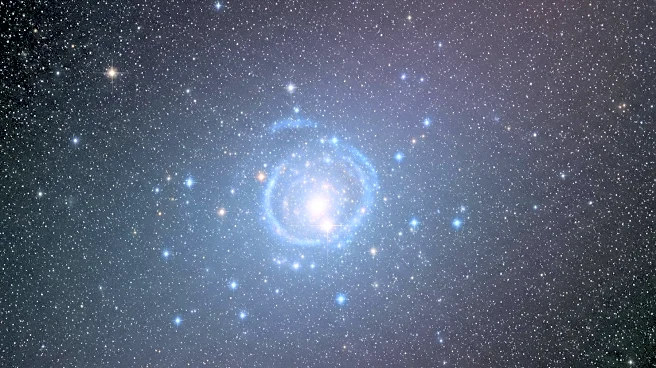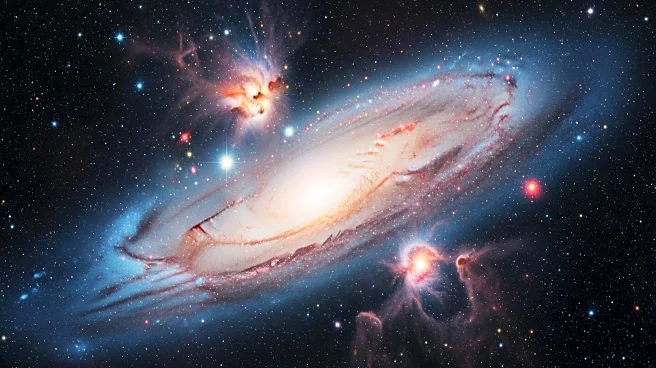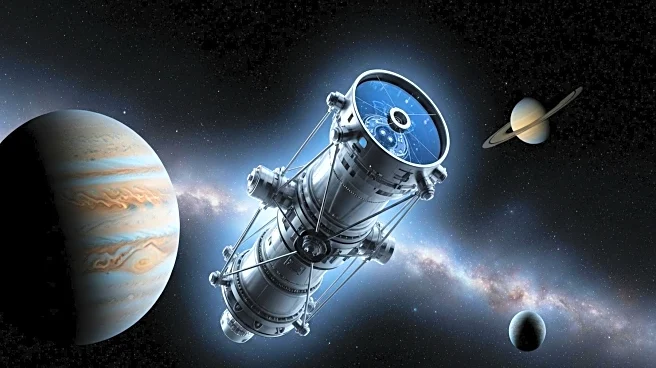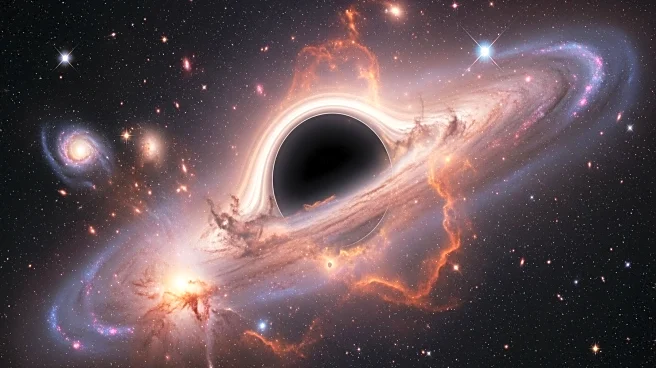What's Happening?
The James Webb Space Telescope (JWST) has captured a remarkable image of the Pismis 24 star cluster, located 5,500 light-years away in the constellation Scorpius. This image reveals a celestial landscape of craggy peaks of gas and dust, shaped by the intense ultraviolet radiation and stellar winds from massive newborn stars within the cluster. The tallest of these peaks measures 5.4 light-years from base to tip, equivalent to the width of about 200 solar systems. The Pismis 24 cluster is known for containing some of the most massive stars in the Milky Way, including Pismis 24-1, which was previously thought to be a single star but is now known to be at least two stars orbiting each other. These stars, with masses of 74 and 66 solar masses respectively, continue to be among the most luminous in the galaxy.
Why It's Important?
The image captured by the JWST provides significant insights into the processes of star formation and the dynamics of massive star clusters. By observing the Pismis 24 cluster, astronomers can study the effects of stellar winds and radiation on surrounding gas and dust, which are crucial for understanding how new stars are born. The ability of the JWST to capture such detailed images in infrared light allows scientists to penetrate dense regions of gas and dust that are otherwise opaque to visible light, offering a clearer view of the early stages of star formation. This contributes to our broader understanding of the life cycles of stars and the evolution of galaxies.
What's Next?
As the JWST continues its mission, it is expected to capture more images of distant star clusters and nebulae, providing further data for astronomers to analyze. These observations will help refine models of star formation and improve our understanding of the conditions that lead to the birth of stars. The ongoing study of Pismis 24 and similar clusters will likely yield new discoveries about the composition and behavior of massive stars, as well as the role they play in shaping their cosmic environments.
Beyond the Headlines
The JWST's ability to observe in infrared light opens up new possibilities for exploring regions of space that are otherwise hidden from view. This capability is particularly important for studying the early universe, where many objects are shrouded in dust. The telescope's findings could lead to a deeper understanding of the formation of the first stars and galaxies, shedding light on the origins of the universe itself.
